More Than 20 Years Later, Cornell’s Great Pumpkin Mystery Remains Unsolved
Who put a gourd on top of this 173-foot bell tower?
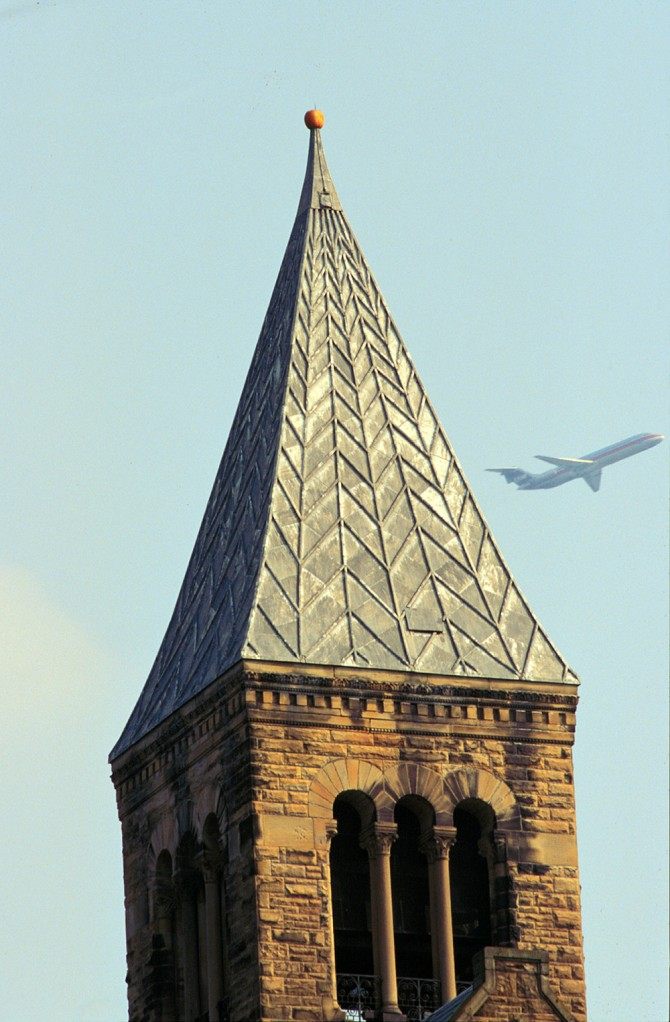
Cornell University’s McGraw Tower is 173 feet tall. It’s visible for miles, and most days, its 21 chimes ring out morning, afternoon, and evening. It’s a campus touchstone, one that community members use to meet up with friends, give people directions, and generally anchor themselves.
So on October 8, 1997, as students walked to their Wednesday morning classes, it’s fair to say they were surprised to discover that their beloved landmark had grown an appendage. “One day, there was this thing at the top of the tower,” remembers Oliver Habicht, at the time a recent graduate working for the university IT department. It was way up at the top, impaled on the spire. It was round, and about the size of a beach ball. Was it… was it a pumpkin?
It was. Someone, somehow, had apparently carried the gourd up hundreds of steps. They had snuck it silently through the tower’s bell cage—a structure criss-crossed with cables that, if tripped, would have let out an immediate BONG—and gotten it up to the top of the very steep roof, all without being noticed. Not only that, but they had affixed it well enough that it stayed put until springtime, enmeshing itself in campus culture and becoming its own type of steady, albeit slowly rotting, beacon.
Twenty years later, the prank “continues to generate interest at Cornell and [in] the community,” says the university archivist, Evan Fay Earle. All of this even though—or perhaps because—no one is quite sure who did it.

Like most storied institutions, Cornell has seen its fair share of pranks. One legendary 1920s student, Hugh Troy, pulled off a whole series: once, he apparently stole a taxidermied rhinoceros foot, made fake tracks in the snow, and convinced everyone that the animal had gotten loose on campus. There’s also Narby Krimsnatch, an entirely fake alumnus who nonetheless keeps appearing at reunions and in yearbooks.
Even in such company, the pumpkin was an immediate classic. “It became a part of conversation on campus, in the community, and with alumni from far away,” Earle says. “It was creative, it was not easily accomplished, it wasn’t crude or vandalistic.” It was just a pumpkin in an extremely improbable place.
The administration decided not to touch it, figuring it would come down on its own. For months, though, it just didn’t. “All the [pumpkins] we had in town had all rotted away,” says Habicht, but this one held fast. Perched high atop its tower, the pumpkin gathered devotees. “This is first-rate stuff, the best I’ve ever seen,” Gould Colman, who had recently retired from his longtime position as the university’s archivist, told the New York Times. Campus newspaper the Cornell Daily Sun published a Pumpkin Watch on the front page for three straight weeks.

Other students joined in the fun. “One group parked a whole bunch of pumpkins at the bottom of the tower, sort of cheering on the one at the top,” says Habicht. One student wrote a pumpkin version of the Cornell song (sample lyric: “Who can tell from whence it came there, silent and alone? / See the guardian of the harvest, nobly thus enthroned”). Campus security blocked off the area around the bottom of the tower, lest someone walk by at the wrong moment—or gaze up at the interloper too long—and get beaned.
Habicht, too, found himself inspired. He had been dabbling in online video—at the time, a much less common genre—and decided to set up a webcam on the seventh floor of nearby Olin Library. He then cooked up a website that allowed people to check in on the pumpkin anytime, from anywhere. “My running joke has been, this is like watching paint dry,” he says. “It does not move. But for whatever reason, it became extremely popular.”
The Pumpkin Cam was soon getting clicks from far-flung alumni, along with current staff and students who wanted to be the first to see it fall. (The site has been partially resuscitated in honor of the 20th anniversary, and Habicht is working on getting it fully functional again.)
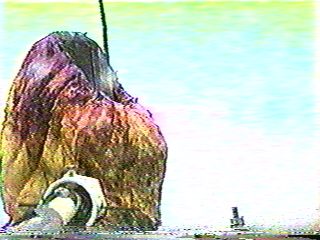
It also spawned at least one sub-mystery: was it really a pumpkin at all? After a number of people expressed doubts—including an assistant professor of horticultural sciences, who told the Ithaca Journal that the object was too hardy to be biotic—the university sponsored a contest to find out. The winners, a team from the undergraduate physics department, flew a remote-controlled weather balloon up to the pumpkin with an electric drill attached, and got a tissue sample. “You and I would call it a drone,” Habicht says. “But this was before the word ‘drone’ was out there.”
Eventually, curiosity won out. On March 13, 1998—a full 157 days after it first appeared—the university readied a crane to retrieve the pumpkin. After a mishap in which the machine itself knocked the pumpkin from the spire onto some rooftop scaffolding, provost Don Randel ascended in the bucket and grabbed it, now more frozen gloop than gourd.* He then spirited it away in an ambulance. After two weeks of analysis via “microscopic slides, videotapes and photographs,” a special panel of plant biology professors announced that it was, indeed, a pumpkin.
Its remains were freeze-dried and kept in a glass case in the visitor’s center, then added to a display of brains in the psychology department, and finally found a permanent perch in the office of professor Barbara Finlay. Eventually, the infamous vegetable decayed completely.
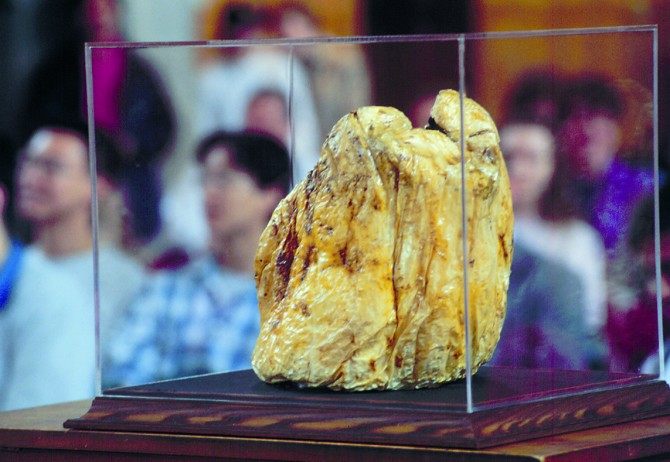
Still, the original whodunit remained intact, along with the equally important howdunit. Over the years, at least two purported tell-alls have appeared. The first, published in the May 2000 Graduation Issue of the Cornell Daily Sun and readable in part online, attributes the prank to three friends: one student ringleader, alias “Kennedy,” and two Ithacan accomplices, “Reagan” and “Nixon.”
The second version appeared a few months later, in the Cornell Chimes Newsletter, and tells of a confession former Head Chimesmaster Courtney Kimball got from “Rob,” a student from the University of Montana. (Rob’s account is full of derring-do, and can be read in its entirety at the link above.)
Cornell historian Corey Ryan Earle—Evan Earle’s brother—called Kimball’s account “the best source for how it happened.” But if anyone knows for sure, it’s probably Evan: Another rumor holds that the identity of the prankster is passed down from archivist to archivist. Evan would neither confirm nor deny this, saying merely that “for a prank like this to remain mysterious is part of what makes it such a good prank.”
And so 20 years have passed with no real answers. Video streaming technology has improved immensely (Cornell’s website offers 24/7 live views of various campus landmarks). Drones survey crops on the regular. Students continue to find ways to mess with their institutions. And the pumpkin prankster remains anonymous and at large, free to stick gourds wherever he or she pleases.
*Correction: This post previously stated that the pumpkin came down from the tower on March 14th, 1998. It was March 13th. We have also corrected some details of the pumpkin’s descent.
Gastro Obscura covers the world’s most wondrous food and drink.
Sign up for our regular newsletter.








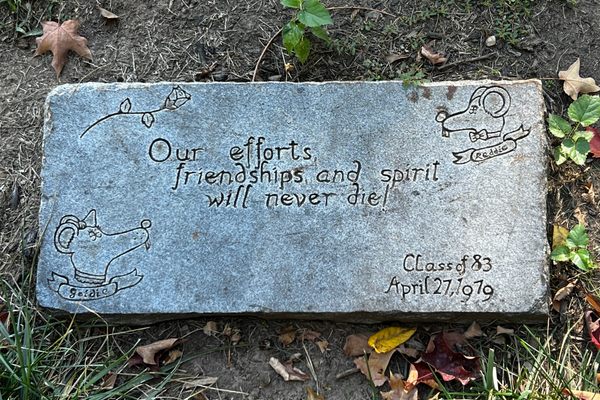
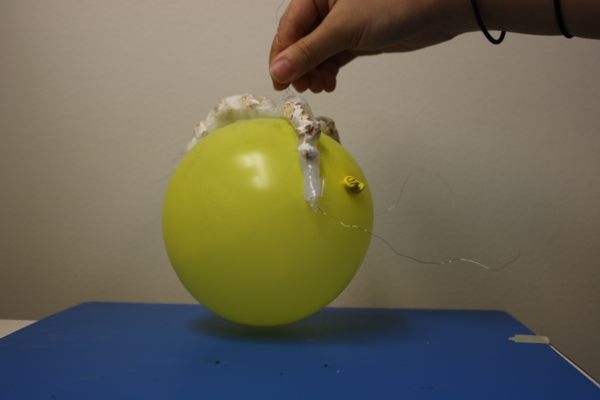








Follow us on Twitter to get the latest on the world's hidden wonders.
Like us on Facebook to get the latest on the world's hidden wonders.
Follow us on Twitter Like us on Facebook